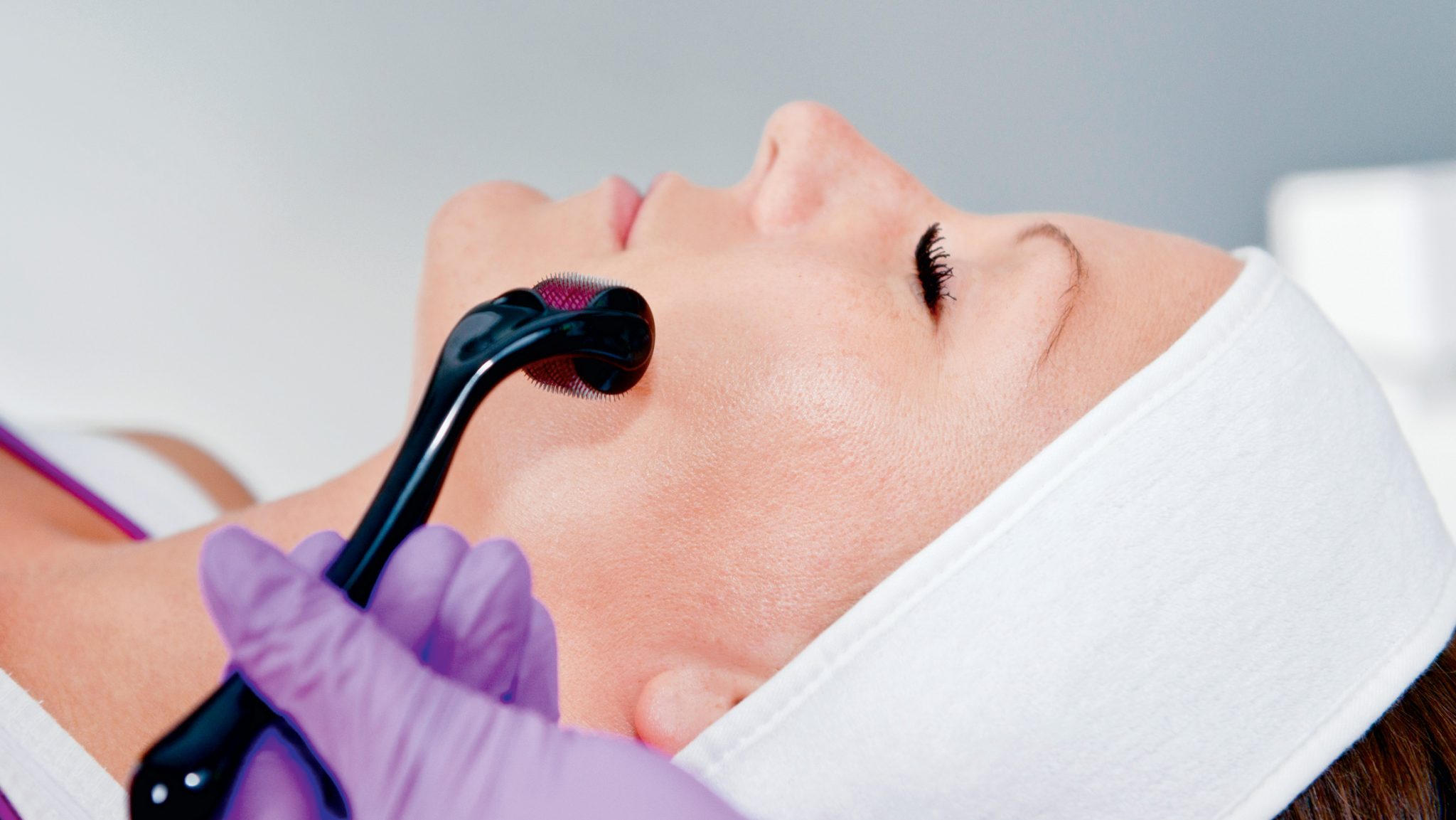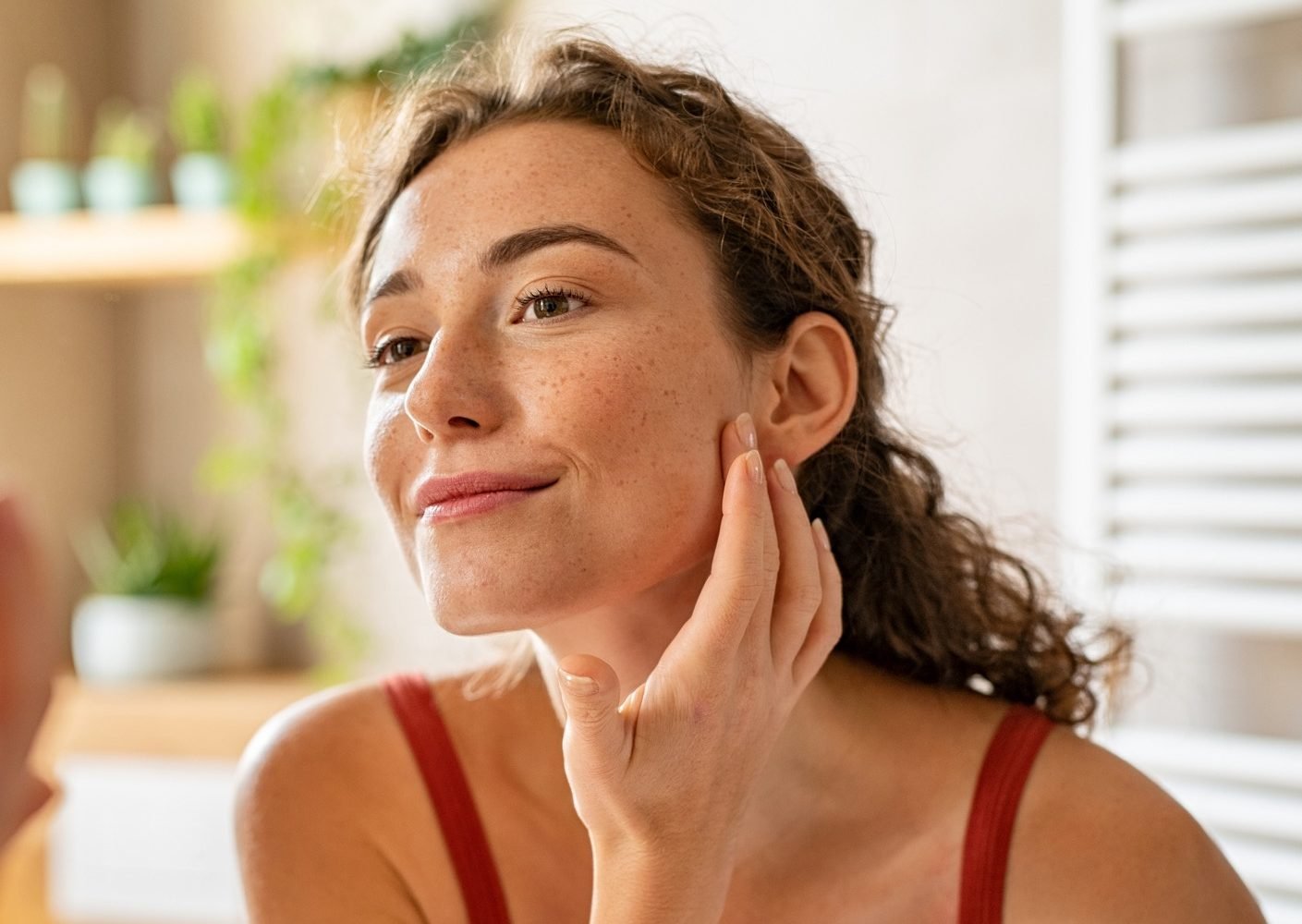In Washington, combatting aging skin—or keeping it from aging in the first place—isn’t the extreme “What did she have done?” sport it is in cities like New York and LA.
“People don’t have time for the beekeeper’s-costume routine and a lot of downtime,” says DC dermatologist Noëlle Sherber. “It’s not about peels that make you red and raw—it’s more ‘How can I take a few hours and get back to my life?’ ”
Here’s how. These new potions and procedures can battle crow’s-feet, wrinkles, and sunspots often in less time and with less pain than some older treatments
Better Sun Protection
First things first: Whether you’re 18 or 78, wearing a broad-spectrum sunblock (the American Academy of Dermatology recommends 30 SPF or higher) remains the first line of defense against skin cancer, wrinkles, and photoaging. The latest—and many dermatologists say, greatest—formulations are now mineral-based.
“Chemically based sprays sink into the skin to work, but they can irritate things and wash off quickly,” says Sherber. “But mineral-based ones [usually a combination of zinc oxide and titanium dioxide] are more like putting on a T-shirt. They’re tenacious, and they work by reflecting light.”
An idea of cost: Clinique Broad Spectrum SPF 50 Mineral Sunscreen Fluid for Face, $26 at Bluemercury.
Pain factor: None.
Get Needled
There’s much buzz around microneedling, which involves rolling facial and neck skin with a dermaroller—a small device that looks like a paint roller, except it’s loaded with miniature needles of varying sizes. While it resembles a Game of Thrones torture device, the skin is usually coated with numbing cream first. This means you should feel just a little pressure, vibration, and stinging as the needles prick tiny holes in the skin’s surface, causing micro-injuries to stimulate collagen production and skin-cell turnover.
“I’m seeing really good results for patients from their twenties through their forties,” says Dr. Anne Rothman of Gaithersburg’s Center for Cosmetic and Clinical Dermatology. “It brightens skin, helps with sun damage, and lessens the appearance of fine lines.” Your skin will probably be a bit red and irritated for a day or two, but there’s not a great deal of downtime.
An idea of cost: $500 a session, Center for Cosmetic and Clinical Dermatology.
Pain factor: Low to moderate, thanks to the numbing cream. You’ll need to baby your skin for a few days after—and stay out of the sun—because it’ll be pink and a little sensitive.
A Shot to the Chin
Last year, the Food and Drug Administration approved injecting Kybella, or deoxycholic acid, into the area below the chin to treat neck fat and double chins. Call it the anti–Winston Churchill treatment.
Over one to three sessions, a doctor administers multiple injections of the acid, which targets and dissolves fat-cell membranes that the body then flushes out naturally. The injections are mildly painful and some swelling is likely after treatment, but “it’s going to be a blockbuster, I think,” says Dr. Navin Singh of Washingtonian Plastic Surgery in Chevy Chase. “It’s not quite noninvasive, but it really seems to work at dissolving under-chin fat.”
Some dermatologists remain concerned about side effects—a few patients report a “bullfrog” chin that lasts for days.
An idea of cost: $1,500 a session (one to three sessions are optimal) at Washingtonian Plastic Surgery.
Pain factor: Mild to moderate. You’ll need multiple injections, which can be uncomfortable, though doctors do administer a numbing agent before treatment. Following the procedure, swelling and bruising are possible.
Lasers with Less Downtime
Laser treatments are among the most effective ways to treat fine lines, improve skin tone, and zap age spots. Traditional ablative (a.k.a. injuring) lasers essentially remove the top layer of skin on your face but require a few weeks of healing. Newer, nonablative lasers target the underlayer of skin, stimulating collagen growth and tightening skin.
“With a laser like that, you’ll feel some stinging but you’ll have no downtime, just a little pinkness afterwards,” says Sherber, who uses the new Clear & Brilliant Perméa model. “It also tightens the pores.”
Most treatments take 15 to 20 minutes. Skin looks slightly pink and feels a little rough for a few days; a week or so later, patients report fresher-looking, tightened skin.
An idea of cost: $500 to $750 a session, with four to six treatments a few weeks apart providing the most visible results.
Pain factor: Low to moderate. The laser does sting a bit, but discomfort is mainly the sensation of getting zapped multiple times.
Rethinking Injectables
Injectables—both nerve freezers such as Botox and fillers like Voluma—are being used in more subtle ways, bringing dimension back to the face instead of just smoothing things out and creating a puffy, mask-like appearance. “We used to just put fillers like Restylane and Juvéderm around the nose and the mouth,” says Rothman, “but now doctors often fill the cheeks first, restoring architecture to the zone and avoiding a kind of flat, pancake effect.”
Thanks in part to disdain for celebs with expressionless foreheads, doctors are administering the botulinum-toxin nerve blockers Botox and Dysport with a lighter hand. “I’m doing what I call micro-Botox,” says Singh. “It’s basically taking the same amount of Botox you’d typically put in crow’s-feet and spreading it all over the face for a subtler effect.” Singh often treats younger customers—for example, law students with frown lines from constant studying—with light doses of Botox to “train” their muscles not to be in a resting scowl mode.
An idea of cost: $900 per syringe of Voluma (one to two syringes per treatment; results last nine to 18 months); about $15 per unit of Botox (20 to 40 units per treatment; results last three to six months).
Pain factor: Moderate, depending on area injected. Numbing creams are often used with fillers—you’ll feel a little discomfort, almost like a pimple extraction during a facial. With freezing agents such as Botox, you’ll feel the pinprick injection; some patients report it’s more painful than filler because numbing creams are generally not used.
Getting Your Vitamin C
Skin experts have long recommended retinoids—vitamin A–derived creams or compounds, such as Retin-A, that promote skin turnover and stimulate collagen growth—as part of a nighttime beauty routine. Many now also suggest adding vitamin C–powered serums in the morning.
“Vitamin C builds elasticity and protects against free radicals and UVB,” says Marla Malcolm Beck, CEO of the luxury beauty chain Bluemercury.
An idea of cost: M-61 Vitablast C Serum (a product developed by Beck), $92 at Macy’s.
Pain factor: None.
Subtler Surgery
Even in an era of high-tech beauty innovations, facelifts won’t ever disappear. “At a certain point, if you have wrinkles even at rest, you probably will want surgery,” says Singh. But less invasive, less expensive surgical options have emerged in recent years.
One of the most popular: grafting fat into parts of the face that have lost volume, such as the area around the cheekbones or under the eyes. Working via tiny incisions and using micro-sized cannulas, a doctor injects fat (liposuctioned earlier from the abdomen or thighs) into the patient’s numbed face. Afterward, there’s some swelling and absorption of fat. “But it’s a permanent solution to fillers, which go away after a time,” says DC plastic surgeon Ariel Rad, who is Sherber’s husband and co-founder in the downtown practice Sherber and Rad. “We do tiny cuts that heal with little or no scarring. I often combine it with a lower-eyelid lift, and the effect is that you’ll just look refreshed and rested, not like you’ve had work done.”
An idea of cost: Starts at $3,500, or $10,000 for a full face.
Pain factor: Moderate to high. Local anesthesia is generally used both for the liposuction to harvest the fat and for the injections to put it into the cheeks. Because tiny cannulas are used in both cases, any discomfort usually involves the healing of the tiny incisions.
This article appears in our September 2016 issue of Washingtonian.



















